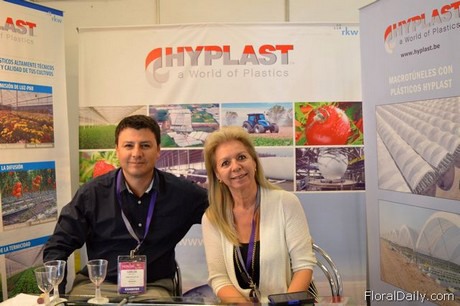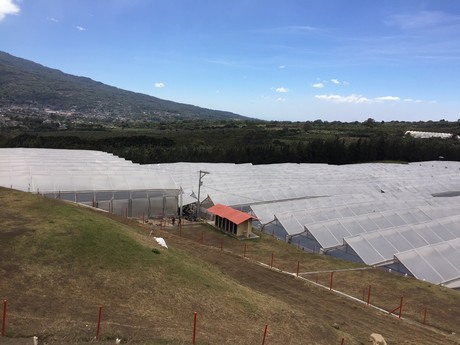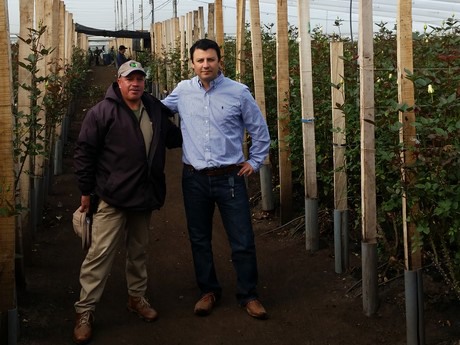
Carlos Reategui and Constanza of Hyplast at the Proflora in Colombia
Diffuse plus thermicity
According to Reategui, the use of thermic films with higher light transmission will offer the Ecuadorian growers many advantages, and one of the advantages is the increased temperature within the greenhouse. "At the moment, the majority of growers in Ecuador use a regular diffuse film without thermicity. I think it's time for them to start using a real thermic film with higher light transmission for their crop, even though it is a little more expensive. If you compare a regular greenhouse with a diffuse film, with another one using a high thermic film, the difference could be more than 7C°, and that is a lot," he says.

Lack of EVA polymer
In order to make a thermic film, it is important, according to Reategui, that not only the right polymer is used but also the right amount of polymer during production. "The polymer used to make a thermic film is called 'EVA (Ethylene vinyl acetate)' and is more expensive than regular polyethylene. Therefore, some plastic manufacturers prefer not to use it, or use just a little amount. We tested some film samples from Ecuador in our labs in Belgium, and none of the films were thermic, or had very little content of EVA polymer. And that's a pity, because farms in Ecuador need this polymer as it creates high thermic films for their greenhouses."

Hytithermic
In order to offer the Ecuadorian growers the right film, Hyplast invested in developing special thermic films, called Hytithermic, that are available in three versions; for red, colored and bi-colored roses. "The version for red roses has a high ultra violet blocking feature, the one for colored roses a regular UV transfer, and the version for bi-colored roses has a UV open feature that transfers more than 85% of the UV light in order to help increase the intensity of the color of the rose."
However, it is not necessary to equip the entire greenhouse with this kind of film. "In order to reach more than 89% of the total PAR light transmission, especially during the cloudy seasons, we recommend to use of diffuse film for 45 to 50% of the greenhouse."
For more information:
Hyplast
Carlos Reategui
[email protected]
www.hyplast.com










